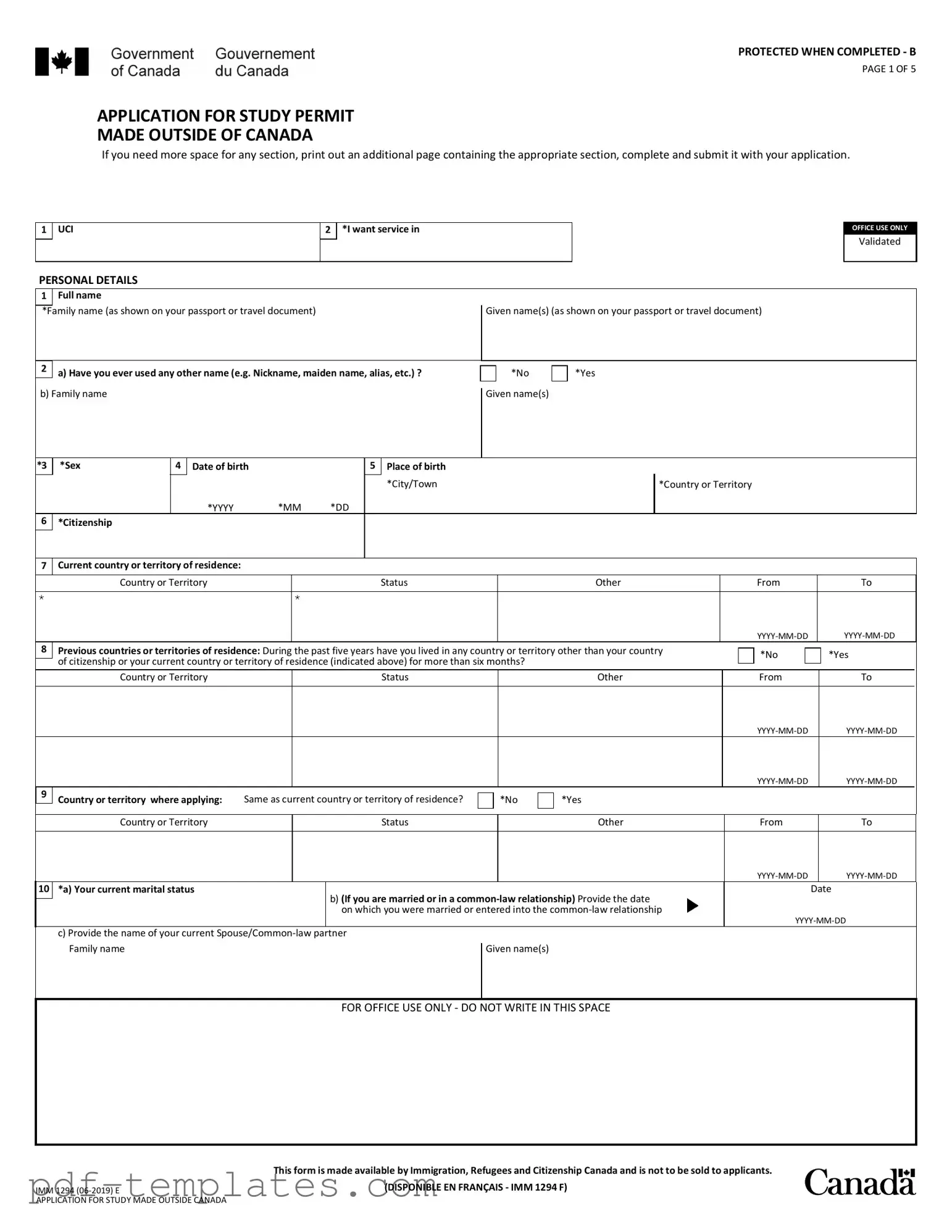The IMM 1294 form, used for applying for a study permit outside Canada, is similar to the Form I-20, which is issued by U.S. educational institutions. Both documents serve as proof of acceptance into a school and are essential for obtaining a student visa. The Form I-20 outlines the student's program details, including the duration and cost of study, much like the IMM 1294 requires information about the educational institution in Canada. Both forms also necessitate personal information from the applicant, ensuring that the educational institution has the necessary details to support the student's visa application.
When navigating the process of RV ownership transfer, it's essential to have the proper documentation in place, such as the Texas RV Bill of Sale, which can be found at documentonline.org/blank-texas-rv-bill-of-sale/. This form not only guarantees clarity regarding the sale but also protects the rights of both the buyer and seller.
Another similar document is the DS-160, the Online Nonimmigrant Visa Application used in the U.S. Both the IMM 1294 and DS-160 require detailed personal information, including the applicant's background, travel history, and purpose of stay. They also require the applicant to provide information about their intended studies or activities in the respective country. Both forms are integral to the visa application process, and any inaccuracies or omissions can lead to delays or denials.
The Student and Exchange Visitor Information System (SEVIS) is also comparable to the IMM 1294. SEVIS tracks international students in the U.S., just as the IMM 1294 is part of Canada's system for monitoring foreign students. Both systems require institutions to report on students' enrollment and status. This ensures compliance with immigration laws and helps maintain the integrity of the educational programs offered to international students.
Lastly, the Form I-539, Application to Extend/Change Nonimmigrant Status, shares similarities with the IMM 1294. While the IMM 1294 is for initial applications, the I-539 allows individuals already in the U.S. to extend their stay or change their status. Both forms require personal information and details about the applicant's current status and intentions. They serve to ensure that applicants meet the necessary requirements for their respective immigration status, whether for study or other purposes.
